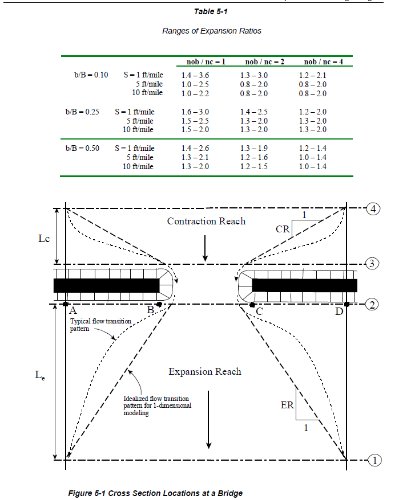The Hydraulic Reference Manual has the following table (page 5-3) that shows the expansion ratio ranges based on contraction width, slope, and roughness values. In general the values range from 1:1 to 3:1, but to be on the conservative side I go with the higher values of 2:1 or 3:1. The only reason I would use a smaller value is if I had actually seen what the flow was doing during an actual flood event of similar magnitude of that I am modeling (which for a 100 year event is unlikely), I have calibration data, or results from a 2D/3D model.
If you can justify using a smaller value go for it and be sure to document how you justified it, otherwise I would go with the higher values from the table.
